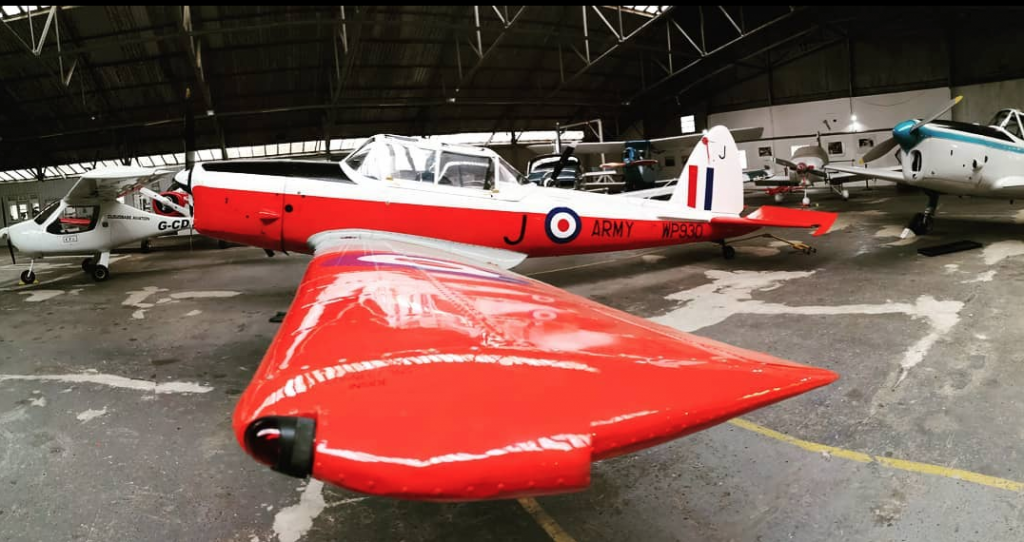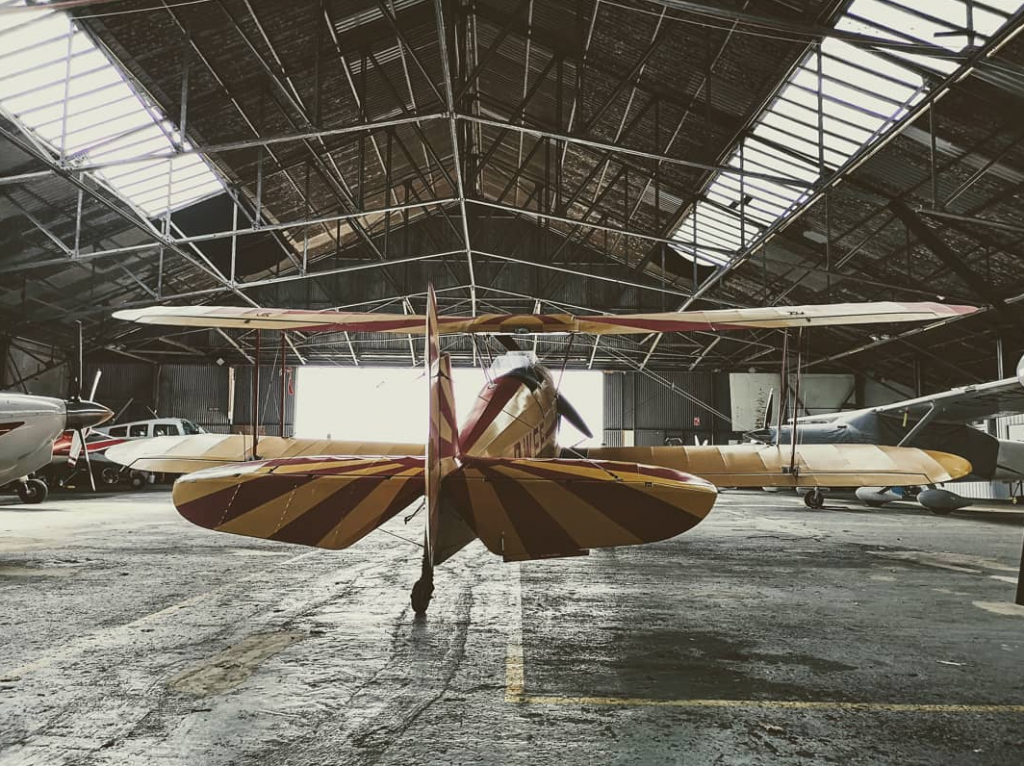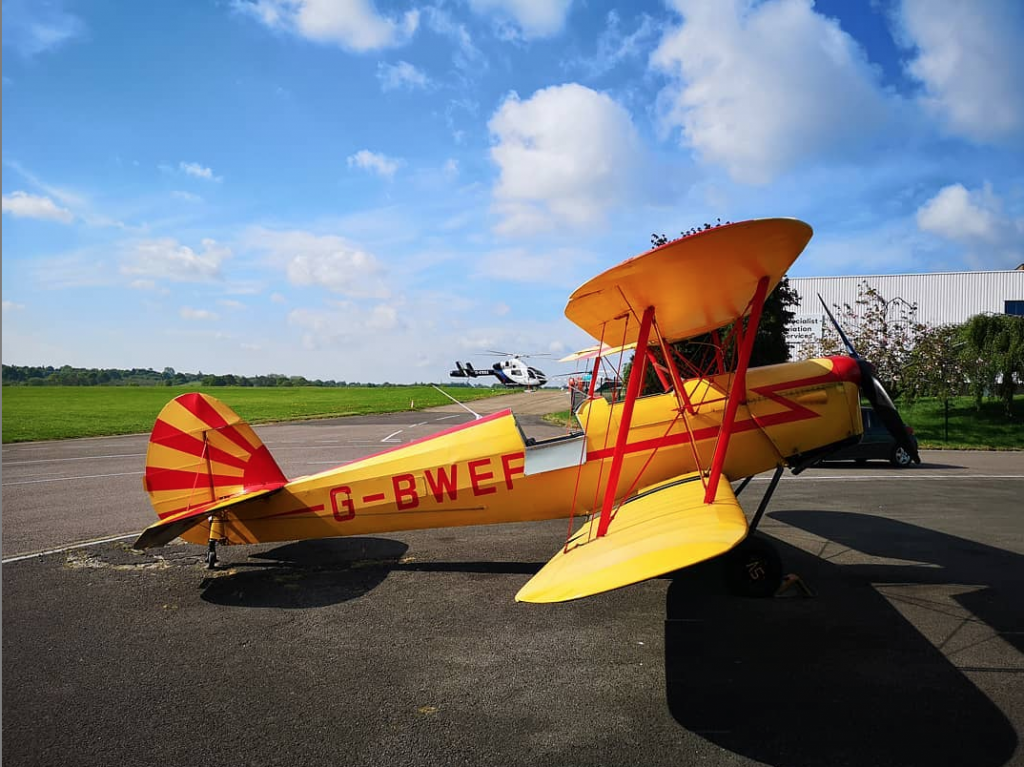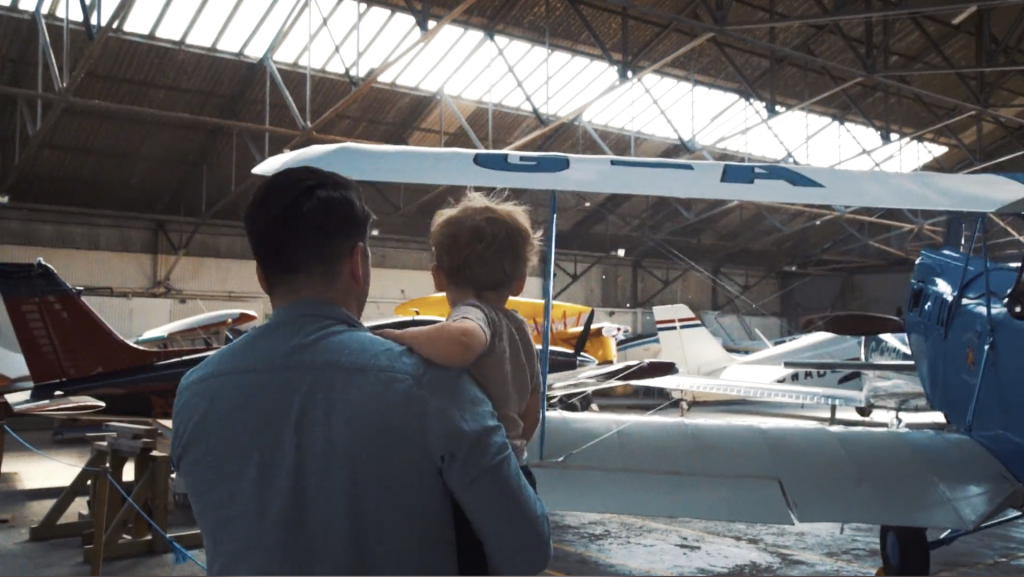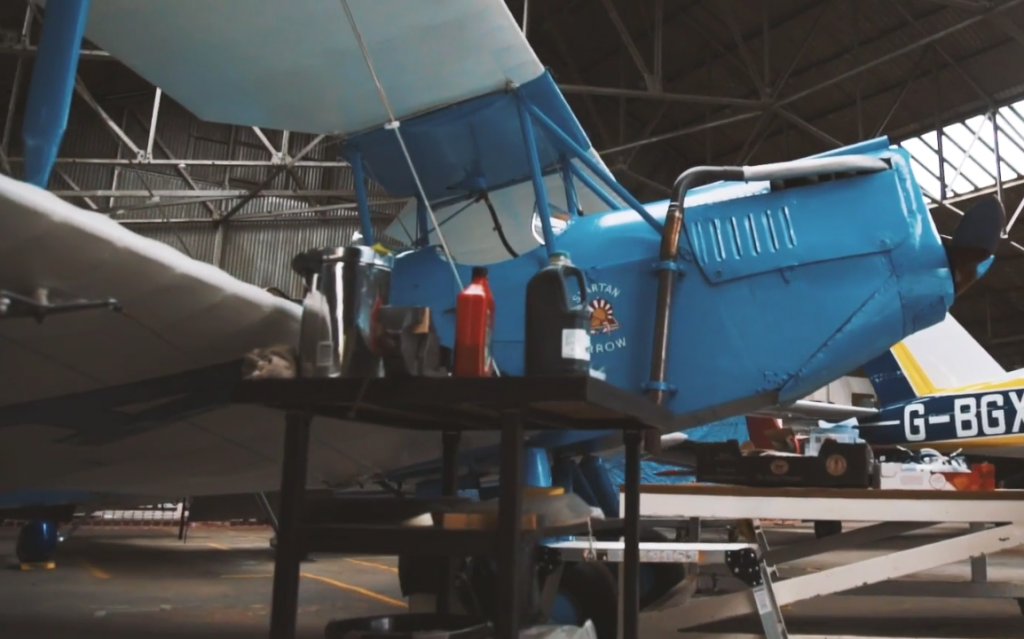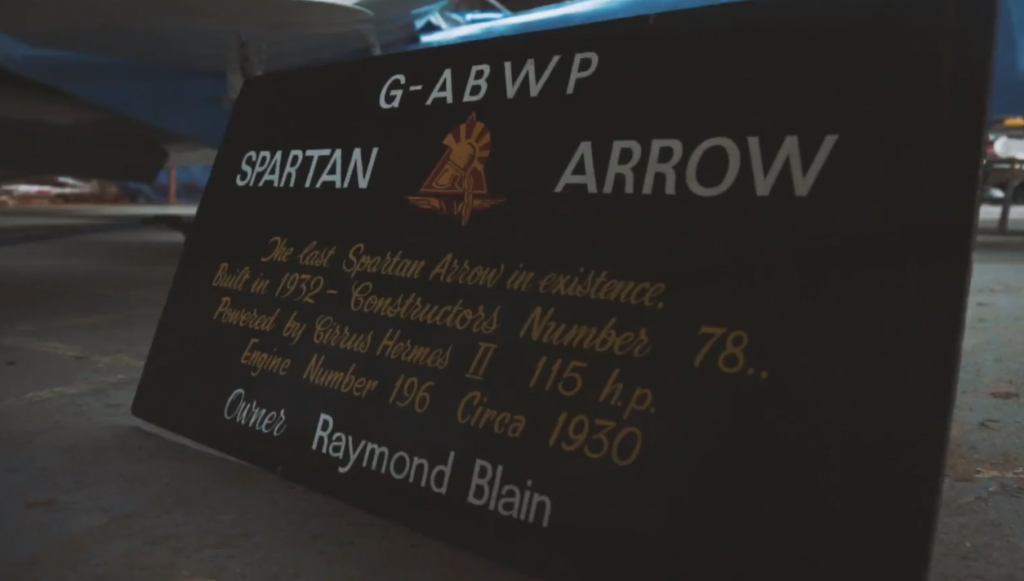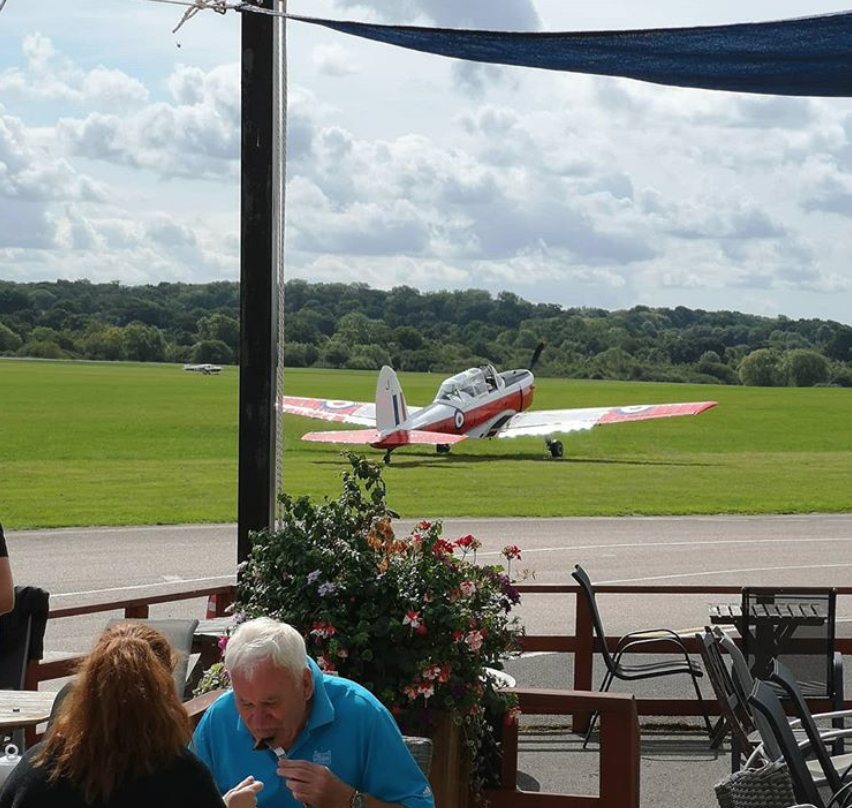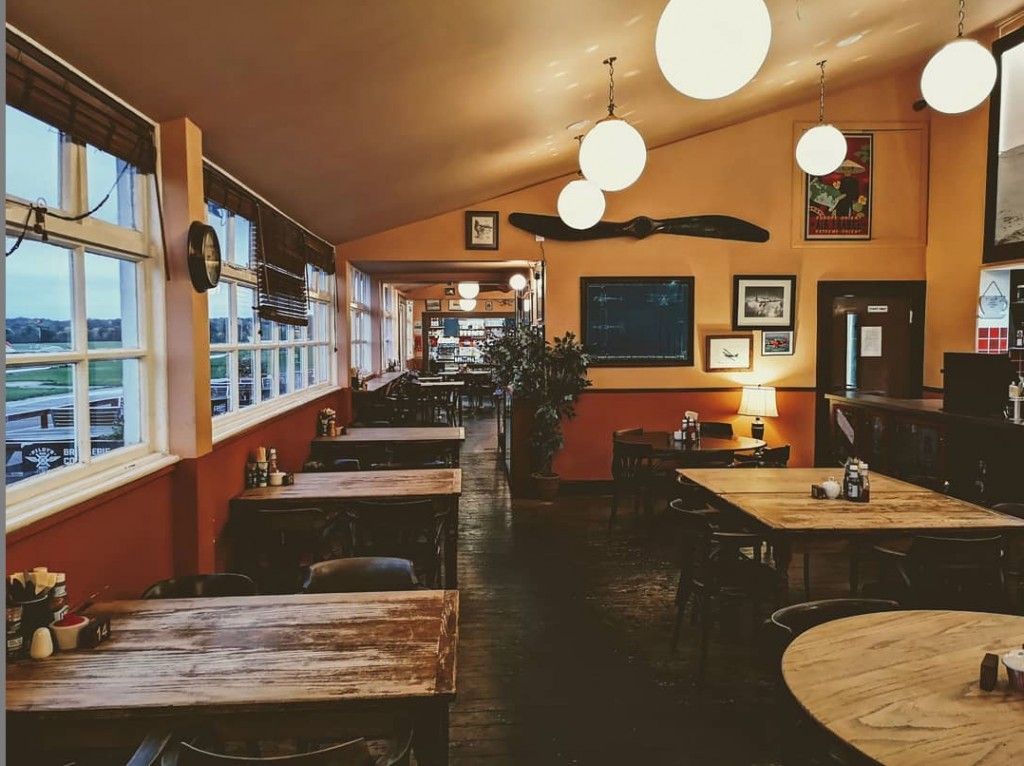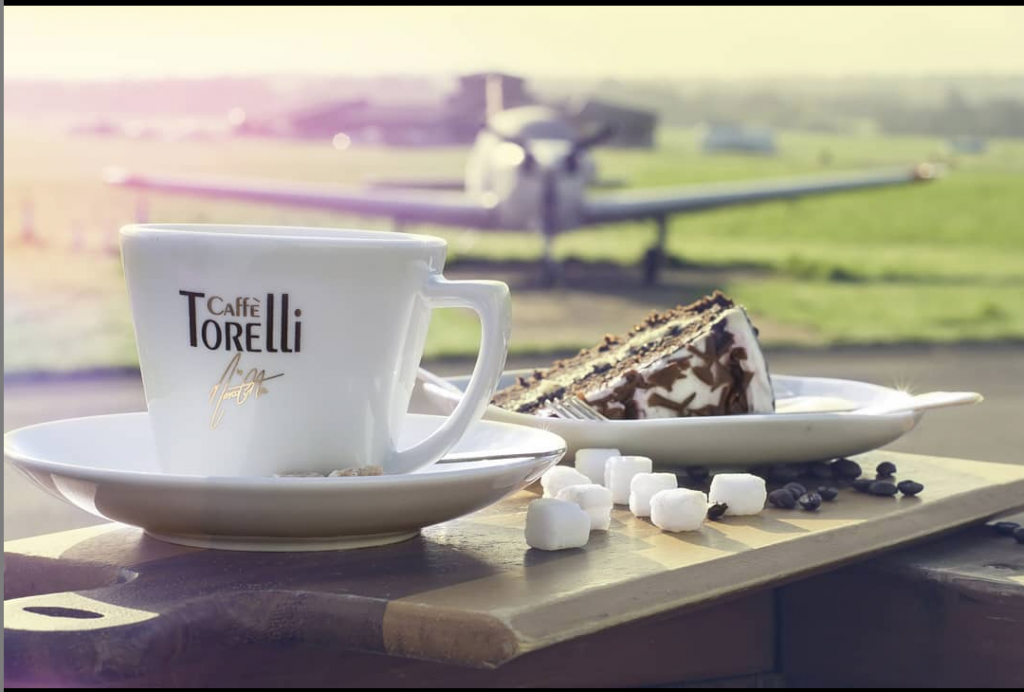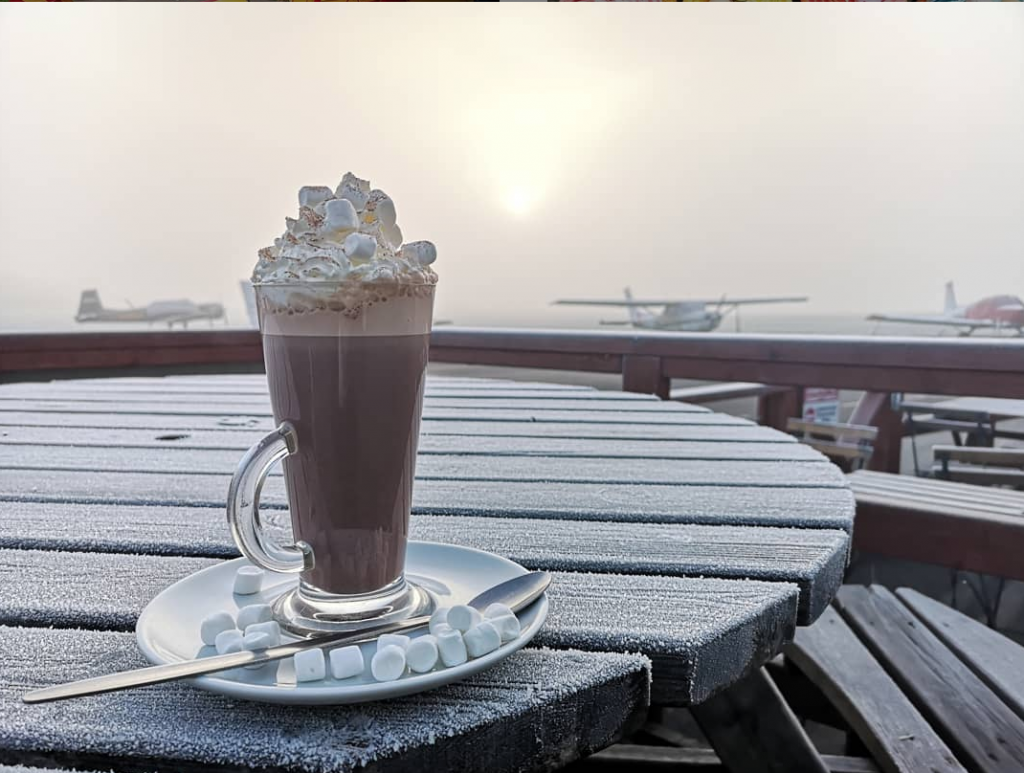A Fascinating History
Redhill Aerodrome was officially opened in 1933. The Pilot’s Hub’s home, known now as Hangar 9, was the first aircraft hangar built in 1934 as part of the newly established airfield, home to the Redhill Flying Club. As well as private flying Redhill was used as an alternative airfield to Croydon Airport by Imperial Airways.
1937 saw the Royal Air Force (RAF) establish a Volunteer Reserve (VR) training school at Redhill, which was operated intensively up to and during the Second World War. Redhill became a fighter base, with Spitfires and Hurricanes stationed at the airfield during the period of the war. It was home to Canadian and Polish squadrons and acted as an advance airfield for the attack on Dieppe in August 1942, housing some 800 personnel at the time. At the end of WW2 Redhill was used for the storage of “materials that may be necessary in cases of national emergency” which were actually unused bombs, these were finally removed by the end of 1946.
On 1st April 1948, No. 15 Reserve Flying School (RFS) was formed at Redhill. Tiger Moths were used as basic trainers for pilots and Ansons for navigational training. The RFS also used a few Oxfords and later it also received DeHavilland Chipmunks. The increasing complexity of modern aircraft resulted in closure of the Reserve Training Programme in 1954 and No. 15 RFS was disbanded on 20th June 1954.
1948 also saw Redhill Flying Club restart its activities at the aerodrome. Redhill is the original home of the Tiger Club, in fact you can still fly in a vintage Tiger Moth at Redhill today with E.V. Ation. The Tiger Moth was the RAF basic flying training aircraft from 1932 until the introduction of the Chipmunk in 1952. The aircraft was used primarily to train future fighter pilots, and proved ideal for this purpose – the Tiger Moth was the aircraft that Spitfire pilots first learnt to fly in.
In 1960 Bristow Helicopters took up residence at the aerodrome and developed a major helicopter pilot training school, which saw annual helicopter movements peak at approximately 65,000. Bristow’s helicopter training operations continued until 1999. In 1986 the old terminal building and control tower was demolished and the buildings you can see now were constructed. The Pilot’s Hub terrace today is situated on the old tower foundations.
Today, Redhill aerodrome is the venue for a wide variety of commercial aviation activities, which range from helicopter and fixed wing charter services to flying training and aircraft maintenance. Some 26 companies and organisations are based at Redhill Aerodrome and over 50% of these companies are related directly to aviation. The aerodrome is also home to a number of private aircraft whose owners base them at Redhill because it provides a convenient location for both business and leisure purposes.
Spartan Arrow
The Spartan Arrow is a British two-seat biplane aircraft of the early 1930s. Only 15 were built and the one in our Hangar is the last surviving example of the type. It was built in 1932 and used to be owned by the world-famous Shuttleworth Collection in Bedfordshire.
Stampe
The Stampe was built in 1946 for the French Air Force as part of the rebuilding of their armed forces following World War Two. It is powered by a 145hp DeHavilland Gypsy Major engine and is fully aerobatic.
Beechcraft 76 Duchess & Socata TB10
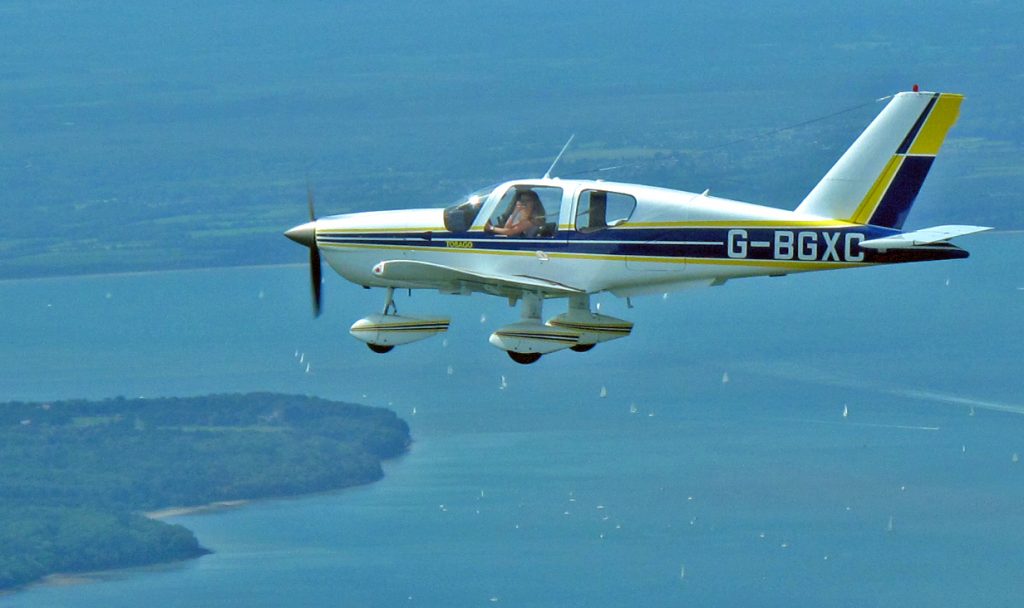
The Beechcraft 76 Duchess was designed as a small complex twin-engine trainer for potential professional pilots. It has gentle characteristics and contra-rotating propellers to make single engine work less dramatic.
Whilst it is not by any means the fastest of its type, it can operate on grass runways with ease and with take-off and landing speeds similar to many singe engine aircraft.
It has been in the same ownership since 1995 and has visited much of Europe including Iceland, Norway (from the furthest South to the North Cape), The Baltic Countries and the most of the Balkans not to mention France, Spain, Portugal and two beach landing strips in the Hebrides.
There are two Socata TB10’s in the hangar. These French built aircraft have a much larger than average cabin with plenty of leg room for the occupants, in fact they can be configured to seat 3 smaller people in the rear.
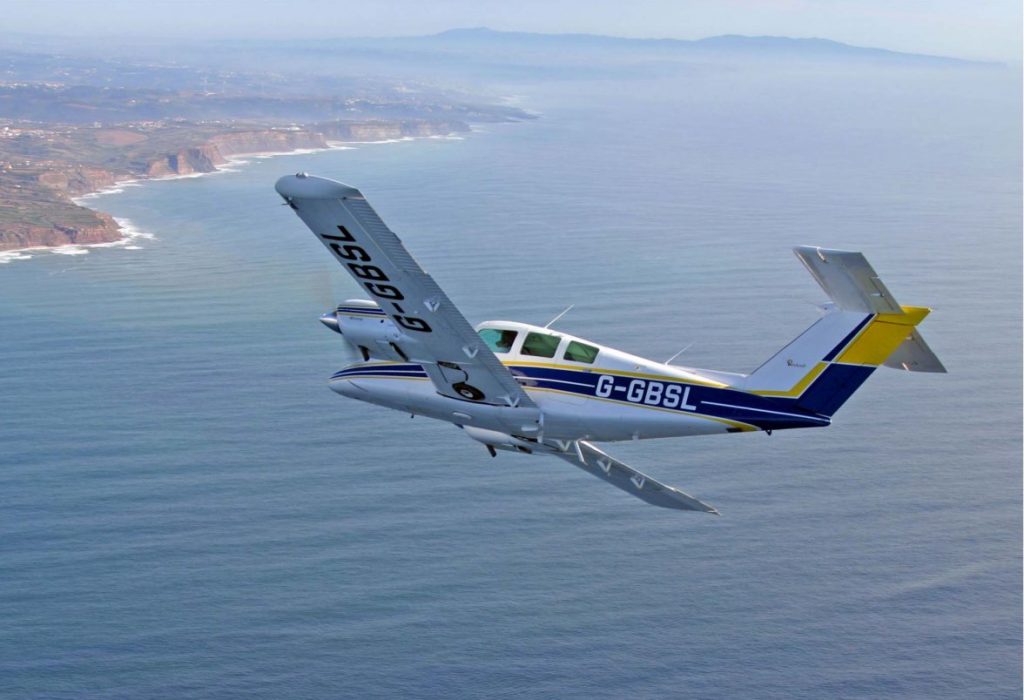
The single 180hp engine drives a constant speed propeller and the aerodynamic wheel spats help the aircraft out-perform the equivalent Piper or Cessna aircraft as far as the cruising speed is concerned. Unfortunately, their performance for taking-off on soft grass is not so sparkling.
They have some Gallic quirks with their “Gull-wing” doors and early versions like the one illustrated incorporated fresh air vents and other trims from Renault cars!
The Rocket
This Cessna FR172J was born in Reims, France in 1973 and lived initially in Germany. She moved to Holland for a short time before coming to the UK in 1978.
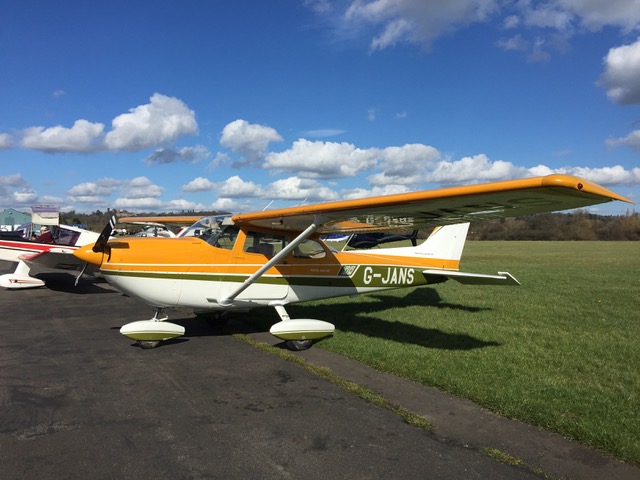
The current owners, a father and son who live nearby, purchased her in 2012.
The Rocket is most unusual in a number of ways. Most Cessna 172’s have an engine that delivers around 140/150hp, which enables them to carry a couple of passengers and a reasonable amount of fuel. The Rocket boasts 210hp, which means that she can fly four people, with baggage and full fuel in her long range tanks (174 litres). At the right altitude and power settings she can stay aloft for up to 7.8 hours!
Her six cylinder fuel injected Continental engine has a displacement of 360 cubic inches – 5.9 Litres.
Most Cessna 172’s of her age would have around 10,000 hours or more on the airframe but the Rocket only has 1300! She has a new paint scheme, new engine, new interior…and a new prop.
At take off, the prop turns at 2800 rpm, and is 1.93 metres from tip to tip – which makes her very noisy at that point! The prop’s angle of attack can be altered at any time whilst flying from inside – rather like changing gears in a car.
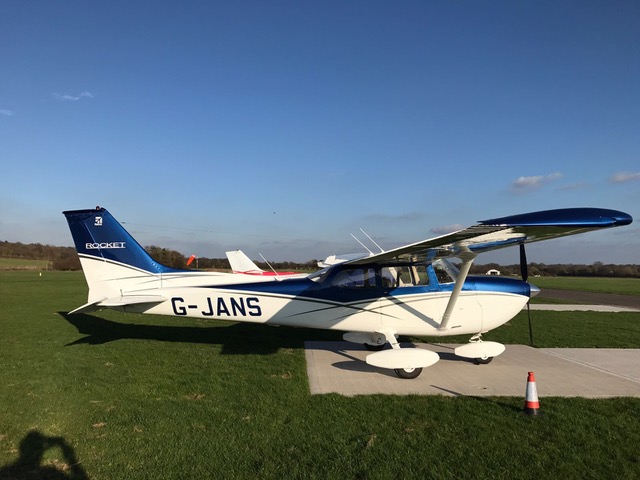
Finally, unusually her flaps can extend to 40 degrees – very handy for landing slowly on a short runway. With no wind she can stop in 189 metres, or be airborne in 113 metres. Her rate of climb is 1424 feet per minute.
She is a privilege to own and fly!
G-AMUF Chipmunk
G-AMUF is a rare civilian chipmunk delivered to Air service Training in 1952. These aircraft were chosen as the principal trainers for the RAF and airlines alike as they’re an ‘easy plane to fly but a difficult plane to fly well’. Many BOAC and BA pilots will have trained on this one as it was one of an initial batch of 4. It is known as the ‘poor man’s spitfire’ partly due to its tandem pilot configuration, where the instructor sits behind the student, but mainly as the engine is offset by 4 degrees to mimic the performance of its more powerful cousin, it needs a lot of left rudder to stay straight on full power!
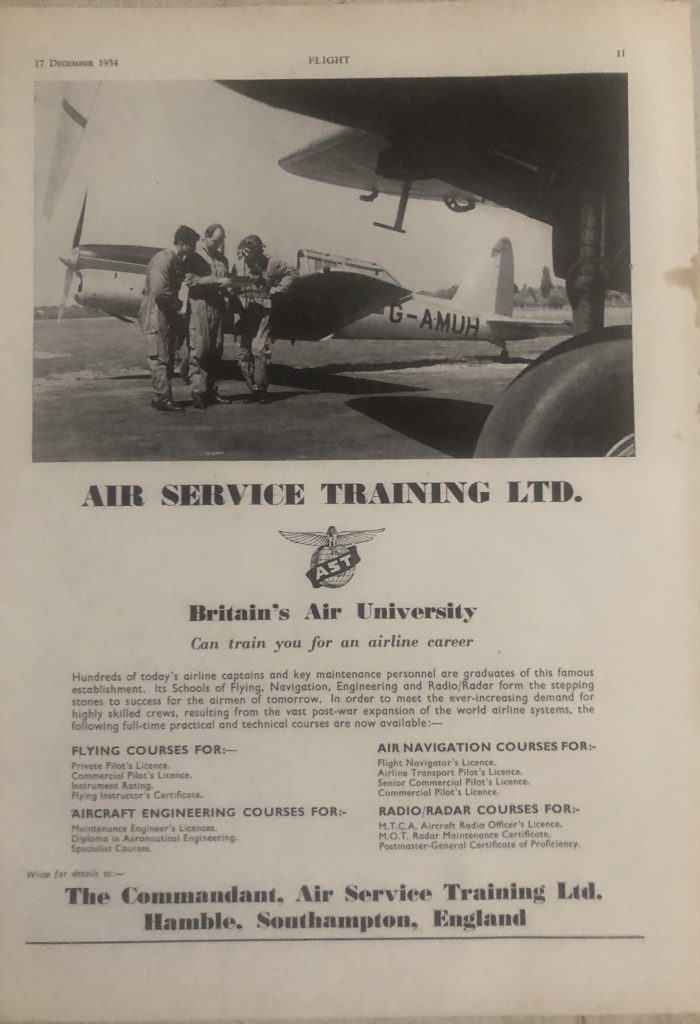

Caspar’s book
Caspar Pierce, our very own “Boy in the Hangar”, has written a short story based at Hangar 9 called “Redhill in Peril” and we think it’s fantastic! Please have a look at it here: Last one to Farnborough is a Messerschmitt!
https://www.yumpu.com/en/document/read/62855893/redhill-in-peril
The hangar is fascinating. I imagine for aviation enthusiasts it is a fantastic venue, but for those like me who have a passing interest but also have small children, it delivers a unique experience – an environment with first class food and lots of fun while you visit!
Jovan, Banstead

